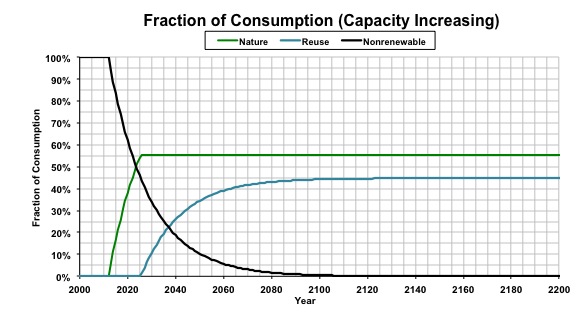
To live sustainably, we must quickly transition from using non-renewable resources to using renewable and reusable resources ("capacity").
Non-renewable resources are resources that are used only once and then converted into waste. Renewable resources are resources that are replenished naturally, without harm to ourselves or other species. Reusable resources are resources that can be used multiple times or at very high efficiency.
As a minimum, we should:
- Stop increasing how much we consume each year.
- By 2024, replace at least half the non-renewable resources we consume with ones produced from renewable and reusable resources, and stop using non-renewable resources entirely by 2100.
- Clean up pollution as fast as possible.
- Increase the amount of natural resources (such as land and water) available to other species.
Here is a minimum set of conditions that would apply to an ideal world for as long as physically possible:
- Everyone can at least meet their basic needs (food, water, clean air, shelter, clothing, health care, safety)
- Everyone has basic freedoms (speech, association, mobility, access to accurate information)
- No one is contributing to species extinctions, including ours
Links:
Starting in 2012, we could build up Nature (starting with not consuming it) and soon derive 55% of our consumption from the resurces it can replenish. The remainder of our consumption would rapidly need to be provided by reusable resources (or efficiency).
